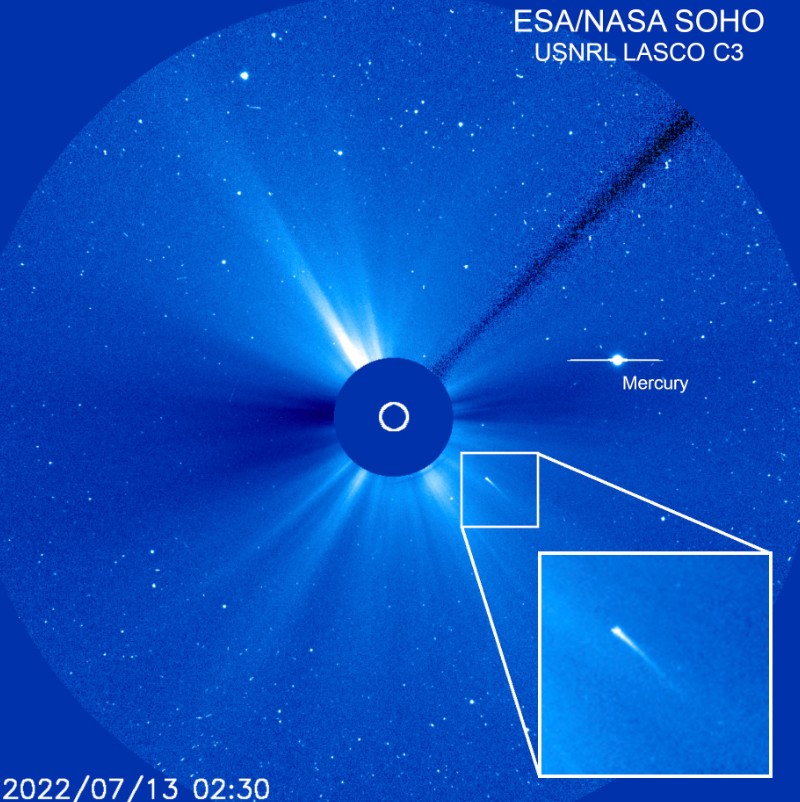The presented animation was received on July 13 by the SOHO Space Observatory. It demonstrates the death of a near-solar comet of the Kreutz family. An icy object with a diameter of several tens of meters passed at a distance of only 200 thousand km from the solar surface (this is half the distance between the Earth and the Moon) and completely evaporated.
Fragments of giant comet
Near-solar comets are comets that come extremely close to our sun at perihelion, sometimes flying at a distance of only a few thousand kilometers from its surface. As a rule, they are small in size (most often from 10 to 50 m) and completely evaporate during the approach to the Sun.
Over 85% of the known near-solar comets are part of the Kreutz family. These are the fragments of a giant ice body that broke up about 2,400 years ago. Most of them are small, but among them there are also large fragments that were clearly visible in the Earth’s sky and became “big” comets.
Hunter of near-solar comets
Near-solar comets are extremely difficult to detect through ground-based observations. By the mid-1990s, only a few dozen such bodies were known to astronomers. Everything changed after the launch of the SOHO Observatory in 1995, when the staff of the accompaniment group was surprised to find that near-solar comets often fall on its images. Sometimes within a week the device photographs up to a dozen of such objects.

To systematize the search for comets, NASA launched the Sungrazer project. Within its framework, a group of amateur astronomers daily scans fresh images of the observatory in search of yet unidentified “tailed stars”. As of July 1, 2022, SOHO has already managed to detect 4489 near-solar comets.
Earlier we talked about how SOHO captured the death of a near-solar comet.
According to https://watchers.news
Follow us on Twitter to get the most interesting space news in time
https://twitter.com/ust_magazine
